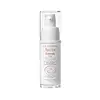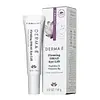What's inside
What's inside
 Key Ingredients
Key Ingredients

 Benefits
Benefits

 Concerns
Concerns

 Ingredients Side-by-side
Ingredients Side-by-side

Water
Skin ConditioningAluminum Starch Octenylsuccinate
AbsorbentGlycerin
HumectantIsodecyl Neopentanoate
EmollientPPG-15 Stearyl Ether
EmollientCetyl Alcohol
EmollientCetearyl Alcohol
EmollientGlyceryl Stearate
EmollientPEG-100 Stearate
Caprylic/Capric Triglyceride
MaskingDimethicone
Emollient1,2-Hexanediol
Skin ConditioningAscophyllum Nodosum Extract
Skin ConditioningBHT
AntioxidantCaprylyl Glycol
EmollientCeteareth-33
CleansingDisodium EDTA
Retinal
Skin ConditioningSodium Dextran Sulfate
Gel FormingSodium Hyaluronate
HumectantSodium Hydroxide
BufferingTocopheryl Acetate
AntioxidantXanthan Gum
EmulsifyingWater, Aluminum Starch Octenylsuccinate, Glycerin, Isodecyl Neopentanoate, PPG-15 Stearyl Ether, Cetyl Alcohol, Cetearyl Alcohol, Glyceryl Stearate, PEG-100 Stearate, Caprylic/Capric Triglyceride, Dimethicone, 1,2-Hexanediol, Ascophyllum Nodosum Extract, BHT, Caprylyl Glycol, Ceteareth-33, Disodium EDTA, Retinal, Sodium Dextran Sulfate, Sodium Hyaluronate, Sodium Hydroxide, Tocopheryl Acetate, Xanthan Gum
Water
Skin ConditioningCaprylic/Capric Triglyceride
MaskingNiacinamide
SmoothingCoco-Caprylate
EmollientStearyl Alcohol
EmollientGlycerin
HumectantPropanediol
SolventLycium Barbarum Fruit Extract
AstringentGlyceryl Stearate
EmollientHamamelis Virginiana Extract
AntiseborrhoeicDiheptyl Succinate
EmollientCapryloyl Glycerin/Sebacic Acid Copolymer
Skin ConditioningCopernicia Cerifera Wax
Dimethyl Mea
BufferingHydroxypropyl Cyclodextrin
MaskingPalmitoyl Tripeptide-38
Skin ConditioningAcetyl Hexapeptide-8
HumectantSodium Hyaluronate
HumectantThioctic Acid
AntioxidantPanthenol
Skin ConditioningAscorbyl Palmitate
AntioxidantSimmondsia Chinensis Seed Oil
EmollientCaffeine
Skin ConditioningAllantoin
Skin ConditioningXanthan Gum
EmulsifyingGlyceryl Stearate Citrate
EmollientPhenoxyethanol
PreservativeEthylhexylglycerin
Skin ConditioningWater, Caprylic/Capric Triglyceride, Niacinamide, Coco-Caprylate, Stearyl Alcohol, Glycerin, Propanediol, Lycium Barbarum Fruit Extract, Glyceryl Stearate, Hamamelis Virginiana Extract, Diheptyl Succinate, Capryloyl Glycerin/Sebacic Acid Copolymer, Copernicia Cerifera Wax, Dimethyl Mea, Hydroxypropyl Cyclodextrin, Palmitoyl Tripeptide-38, Acetyl Hexapeptide-8, Sodium Hyaluronate, Thioctic Acid, Panthenol, Ascorbyl Palmitate, Simmondsia Chinensis Seed Oil, Caffeine, Allantoin, Xanthan Gum, Glyceryl Stearate Citrate, Phenoxyethanol, Ethylhexylglycerin
Ingredients Explained
These ingredients are found in both products.
Ingredients higher up in an ingredient list are typically present in a larger amount.
This ingredient is an emollient, solvent, and texture enhancer. It is considered a skin-softener by helping the skin prevent moisture loss.
It helps thicken a product's formula and makes it easier to spread by dissolving clumping compounds.
Caprylic Triglyceride is made by combining glycerin with coconut oil, forming a clear liquid.
While there is an assumption Caprylic Triglyceride can clog pores due to it being derived from coconut oil, there is no research supporting this.
Learn more about Caprylic/Capric TriglycerideGlycerin is already naturally found in your skin. It helps moisturize and protect your skin.
A study from 2016 found glycerin to be more effective as a humectant than AHAs and hyaluronic acid.
As a humectant, it helps the skin stay hydrated by pulling moisture to your skin. The low molecular weight of glycerin allows it to pull moisture into the deeper layers of your skin.
Hydrated skin improves your skin barrier; Your skin barrier helps protect against irritants and bacteria.
Glycerin has also been found to have antimicrobial and antiviral properties. Due to these properties, glycerin is often used in wound and burn treatments.
In cosmetics, glycerin is usually derived from plants such as soybean or palm. However, it can also be sourced from animals, such as tallow or animal fat.
This ingredient is organic, colorless, odorless, and non-toxic.
Glycerin is the name for this ingredient in American English. British English uses Glycerol/Glycerine.
Learn more about GlycerinGlyceryl Stearate is a mix of glycerin and stearic acid.
It is used to stabilize the mixing of water and oil ingredients. By preventing these ingredients from separating, it can help elongate shelf life. It can also help thicken the product's texture.
As an emollient, it helps soften skin and supports barrier-replenishing ingredients.
In cosmetics, Glyceryl Stearate is often made from vegetable oils or synthetically produced.
This ingredient may not be fungal-acne safe
Fun fact: The human body also creates Glyceryl Stearate naturally.
Learn more about Glyceryl StearateSodium Hyaluronate is hyaluronic acid's salt form. It is commonly derived from the sodium salt of hyaluronic acid.
Like hyaluronic acid, it is great at holding water and acts as a humectant. This makes it a great skin hydrating ingredient.
Sodium Hyaluronate is naturally occurring in our bodies and is mostly found in eye fluid and joints.
These are some other common types of Hyaluronic Acid:
Learn more about Sodium HyaluronateWater. It's the most common cosmetic ingredient of all. You'll usually see it at the top of ingredient lists, meaning that it makes up the largest part of the product.
So why is it so popular? Water most often acts as a solvent - this means that it helps dissolve other ingredients into the formulation.
You'll also recognize water as that liquid we all need to stay alive. If you see this, drink a glass of water. Stay hydrated!
Learn more about WaterXanthan gum is used as a stabilizer and thickener within cosmetic products. It helps give products a sticky, thick feeling - preventing them from being too runny.
On the technical side of things, xanthan gum is a polysaccharide - a combination consisting of multiple sugar molecules bonded together.
Xanthan gum is a pretty common and great ingredient. It is a natural, non-toxic, non-irritating ingredient that is also commonly used in food products.
Learn more about Xanthan Gum